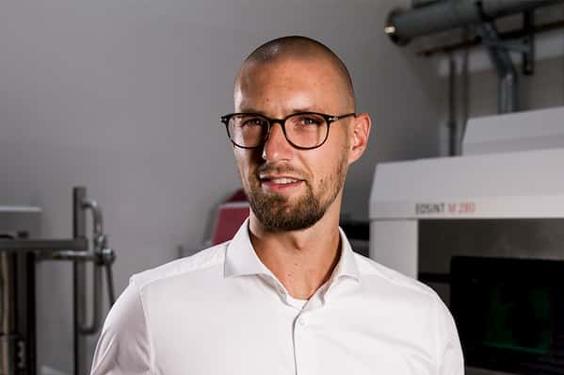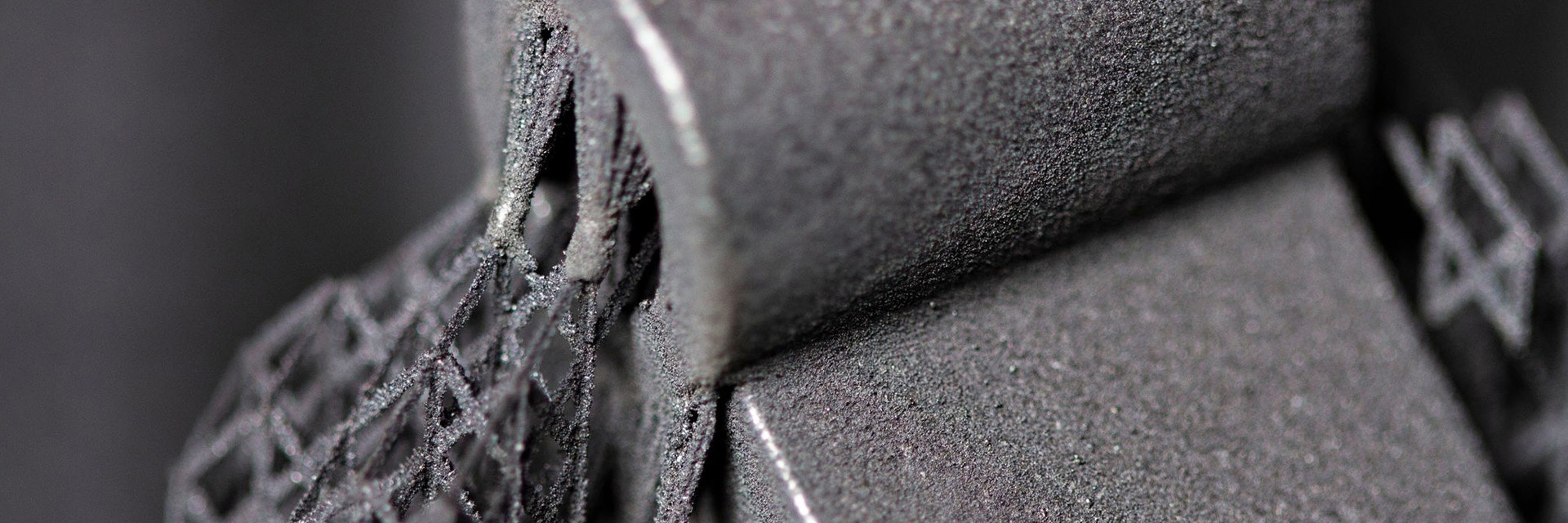CASE STUDY
Digital, Interconnected, and Automated: 3D Printer Control for Industry 4.0

Since it opened in April 2016, Materialise’s production site for metal 3D printing in Bremen has expanded to include more new 3D metal printers. Customer parts made of stainless steel, aluminum, titanium, and Inconel are printed on ten different machines and the site continues to grow. The company’s own software, Materialise Streamics, ensures optimum, cost-saving management of the printers and the orders completed with them. It has been modified to meet local requirements by process engineer Philip Buchholz.
With the growing number of printers in Bremen, efficient management of the systems is becoming increasingly important. Philip Buchholz, who previously gained a lot of experience as an on-site application engineer for Materialise customers, was entrusted with the implementation. The fact that he was familiar with both the software and production processes has proven to be a big advantage.
Control of planning and cost efficiency in production
The Materialise Streamics software efficiently manages the production of 3D parts on different printers and achieves substantial cost and time savings. Together with the data preparation software Materialise Magics, all preparation and implementation steps in the development, validation, and production phases can be managed and many processes automated. Streamics also ensures repeatable quality and life-long traceability of the parts.
“One of the fundamental challenges when operating several 3D printers is the planning,” Philip explains. “First of all, all orders must be sorted according to the material and required quality. Streamics does this automatically with each new incoming order. Next, it’s a case of grouping together orders with the same material and same quality so that as many parts as possible can be produced at the same time per printing process and platform.”


“In a single run, we can print up to 100 different parts for different customers to minimize time, energy, and material requirements.”
Order management and business processes
The next challenge comes after printing: production employees must assign the numerous parts on the platform to the orders and transfer them for the planned post-processing steps. Streamics also comes into play here as the software automatically creates a digital platform-based document for each printing process and stores it in the system. The document includes an image of the platform and a list of all parts on it along with the customer name and order reference.
Streamics also automatically generates a digital document for each order and links this to the accompanying platform document. “Each order document contains an order-specific barcode,” says Philip. “When a production employee identifies parts of an order on the platform and scans the associated barcode with a tablet PC, the Streamics web application shows which post-processing steps are necessary for the parts and in which order.” The employee acknowledges each post-processing step after completion and initiates the next process.
The digital order document is also an important tool for quality management. After scanning the barcode, employees also learn whether a part should undergo additional quality control — for example, in the form of a visual inspection or checking measuring points. These steps are also initiated by an employee and digitally checked off.
Quality control and process optimization
What’s more, if an employee identifies a part as being defective after a post-processing step or during additional quality control, they can immediately report the reason for this to the system using the digital order document. With the notification of the error, the printing of a new part is automatically scheduled and initiated. Also, by reporting the error reasons, any general difficulties relating to a part or a processing step can quickly be recognized and resolved.
“All in all, Materialise Streamics is a tool that fully hits the mark for Industry 4.0,” Philip Buchholz continues. “As a result of the associated digitalization of all relevant characteristics, upstream and downstream processes can become significantly faster, error and cost sources minimized, and maximum transparency achieved at all levels — from the part to the printer park. The software is thus a powerful tool for any company operating several printers in order to optimize and integrate additive manufacturing.”


Additive manufacturing as a company’s driver for sales and growth strategy
Materialise Streamics is a game changer for any organization looking to include 3D printing as a fixed component of their own production and thus want to achieve competitive advantages. Seeing as this solution allows for easy integration of new 3D printers, companies can efficiently control their printers and also safely expand their additive manufacturing activities. Companies that do not have their own machines but would like to sell their own additively manufactured products online can also benefit from the functions offered by the solution: if Streamics is integrated into the online order platform of a 3D printing provider, the integrated Robot module can automate the processing of the orders. In doing so, the tool independently analyzes the construction files, generates the part characteristics, provides a cost estimate, and, after confirmation of the order, prepares the data — and this takes place every day and around the clock.
Share on:
This case study in a few words
3DP Service Bureaus
Materialise Streamics
Introducing a digital process documentation system
Scaling up metal production
